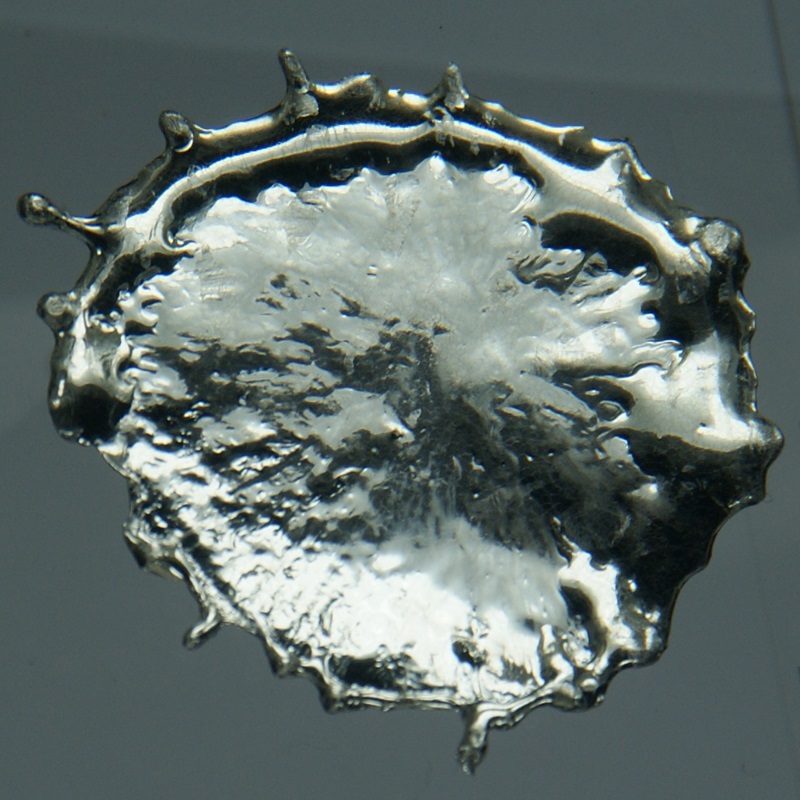Tenn
50
Sn
Grupp
14
Period
5
Block
p
Protoner
Elektroner
Neutroner
50
50
69
Generella Egenskaper
Atomnummer
50
Atommassa
118,71
Masstal
119
Kategori
Posttransitionsmetaller
Färg
Silver
Radioaktiv
Nej
The Latin word for tin is stannum
Kristallstruktur
Rymdcentrerat tetragonalt
Historia
Tin was first smelted in combination with copper around 3500 BC to produce bronze.
The oldest artifacts date from around 2000 BC.
Cassiterite, the tin oxide form of tin, was most likely the original source of tin in ancient times.
British scientist Robert Boyle published a description of his experiments on the oxidation of tin in 1673.
The oldest artifacts date from around 2000 BC.
Cassiterite, the tin oxide form of tin, was most likely the original source of tin in ancient times.
British scientist Robert Boyle published a description of his experiments on the oxidation of tin in 1673.
Elektroner per skal
2, 8, 18, 18, 4
Elektronkonfiguration
[Kr] 4d10 5s2 5p2
When a bar of tin is bent, a crackling sound known as the tin cry can be heard
Fysikaliska Egenskaper
Aggregationstillstånd
Fast
Densitet
7,287 g/cm3
Smältpunkt
505,08 K | 231,93 °C | 449,47 °F
Kokpunkt
2875,15 K | 2602 °C | 4715,6 °F
Smältvärme
7 kJ/mol
Ångbildningsvärme
290 kJ/mol
Specifik värmekapacitet
0,228 J/g·K
Förekomst i jordskorpan
0,00022%
Förekomst i universum
4×10-7%

CAS-nummer
7440-31-5
PubChem CID-nummer
5352426
Atomära Egenskaper
Atomradie
140 pm
Kovalent radie
139 pm
Elektronegativitet
1,96 (Paulingskalan)
Jonisationspotential
7,3439 eV
Molvolym
16,3 cm3/mol
Värmeledningsförmåga
0,666 W/cm·K
Oxidationstillstånd
-4, 2, 4
Användningsområden
Tin is used as a coating on the surface of other metals to prevent corrosion.
It has long been used as a solder in the form of an alloy with lead.
Tin salts sprayed onto glass are used to produce electrically conductive coatings.
Tin chloride is used as a mordant in dyeing textiles and for increasing the weight of silk.
It has long been used as a solder in the form of an alloy with lead.
Tin salts sprayed onto glass are used to produce electrically conductive coatings.
Tin chloride is used as a mordant in dyeing textiles and for increasing the weight of silk.
Tin is considered to be non-toxic but most tin salts are toxic
Isotoper
Stabila isotoper
112Sn, 114Sn, 115Sn, 116Sn, 117Sn, 118Sn, 119Sn, 120Sn, 122Sn, 124SnInstabila isotoper
99Sn, 100Sn, 101Sn, 102Sn, 103Sn, 104Sn, 105Sn, 106Sn, 107Sn, 108Sn, 109Sn, 110Sn, 111Sn, 113Sn, 121Sn, 123Sn, 125Sn, 126Sn, 127Sn, 128Sn, 129Sn, 130Sn, 131Sn, 132Sn, 133Sn, 134Sn, 135Sn, 136Sn, 137Sn